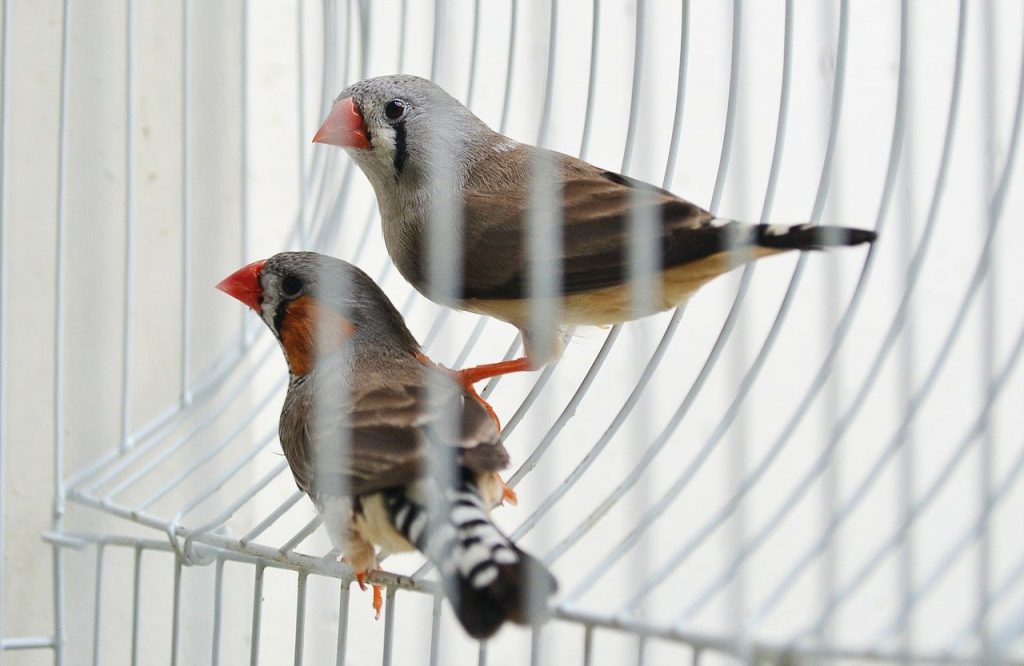
For bird owners ,just a thought of their bird flying away is not less then a nightmare.If a bird get lost,it is a serious condition because a domesticated bird can hardly take care for itself in the out doors.
The excellent way to stop your pet bird from run away is to be very careful about your’double door boundary” habits.Always close external doors before opening internal doors.Also trim your birds wings often.Incase your bird run away,there are some quick and long term steps that may be helpful and end in a safe recovery.
Immediate Response
Timing is vital when you are dealing with a run away.You should take urgent action the moment you find that your fowl is missing.Use all present people including whoever can be called in speedily.
Timing is critical when you are dealing with a fly-away. To have the best possible chances of recovery, you must get into action the moment you discover that it is missing. Use all available people present including whoever can be called in quickly. Delegate tasks so that all immediate steps are happening at once.
Appoint few people to scan all nearby trees, poles, and any other obvious perches on your property and the surrounding properties. Have your volunteers examine every tree from 360-degree angles as even colorful colored birds will be hidden by branches.
Assign someone to collect up all available fishing nets, bird nets, and a few lightweight bathroom towels to hand out. If you can track down the bird, and if you can get it to see you, it may want to fly back toward you,use the towel to throw over the top of it.
Imagining What the Bird Sees
In lucky cases, it will be in shock and be too afraid to move at all. In those cases, be sure to keep a close eye on it as you try to work out a plan for bringing the bird’s cage as close as possible .
Birds will usually choose familiar food and shelter whenever they can locate it, as long as the bird understands how to fly down and make a downward landing. And yet many pet birds that have been raised indoors and not in tall trees have never had to learn this skill. Few hours of calming and consideration may be necessary before a bird will find the courage to flap down. But often, escaped birds quickly go on the move.
Escapes are hectic and birds are not paying attention to where they are flying. Try to imagine the scene from a bird’s eye vision. Realize that your bird has never seen where it lives from the air and has no way of finding where home is. Assuring that it maintains non-stop visual contact with you is essential. Wear brightly colored clothing and use yourself as a slow-moving familiar tracker to inspire the bird closer to you and to the cage, which should be brought as close to the bird as possible .
When it has been found, make a team of people to track it’s location, around the clock if possible, so that eyes are always on the bird. Don’t let the rain discourage you. A bird that has lost sight of anything familiar will begin to search in ever-widening circles, making matters worse.
Using Well Known Sounds
If you are unable to entrap a missing bird back home with cage and food, try “calling” it by name and simply stand in the area, repeating well known words, sounds, and phrases. In some cases, this may entice your pet to fly down to you.
If you regularly play music of a certain type, play some quietly outside. Make it easy for the bird to locate where the sound is originating as a familiar tracer.
Casting a Wider Net with Community Help
Sometimes even the best instant efforts fall short; if you lose visual contact with your birdy for more then a day, it’s time to start Plan B.
Alert the neighborhood through social media and posted signs, listing your bird’s name and brief description with photos. Request that spotters tell immediately any sightings, noting their correct location, and to keep their eyes on the bird until help reaches.
Neighborhood kids will love to look for for birds, especially if a reward is offered. Alert all local bird clubs, vets, lost and found centers, and list your bird with 911 rescue bird sites that cover your town.
Bringing the Cage Near the Bird
Whenever possible, bring the cage close to the bird. For a missing bird, place the cage near the fly away place. If your bird flies out through your front door, for example, place the cage on your porch or doorstep. Whenever possible, hang the cage outside so that it appears just as it would indoors.
Add big amounts of your bird’s favorite foods and tasty treats in or around the cage to lure the bird back home. Someone should always be at the ready near the cage to pounce with a towel or net. Use large pieces of food that are easily visible, and leave the cage with the door open, possibly rigged with a quick-release trap door latch to quickly lock as soon as the bird enters.
Awaiting Exhausted Birds
Normally Day one of freedom for any bird is thrilling with much activity. Day two will be calmer. No food supply exists for exotic birds in the outdoors, so by Day three, your bird will be hungry, dehydrated, and exhausted from lack of sleep plus too much exercise. Birds in this condition will often fly to strangers, seeking help from even un known humans. At this point, they are get trapped easily.
Even after weeks on the loose, they are found this way, so make sure that all obvious reporting agencies have your contact information. Once home, your tired fowl will be very happy to be with you, safe and sound.
You May like:How To Train Your Bird To Dance

Recent Comments